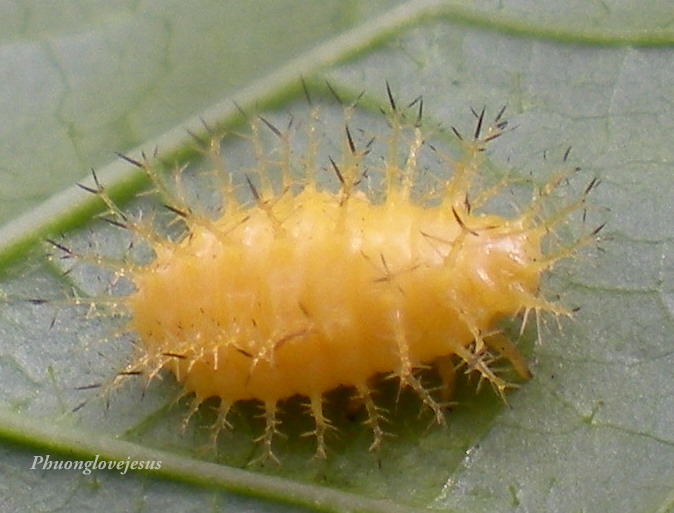Colours
Distinguishing features
The body is nearly round, convex, glossy and up to seven millimetres long. It is reddish-brown with thirteen black spots on each elytron and one or more on each side of the thorax. The eggs are yellow, about 1.5 millimetres long and are placed on the undersides of leaves in batches of ten to sixty five eggs. The oval larvae and pupae are yellow-green decorated with black branched thorny appendices. (Wikipedia)
Size
- Up to 0.7 cm (Length of specimen) - applies to Beetles
Wingspan
- Wingspan data is not yet available.
Synonyms
Distribution
Distribution and habitat preferences
This species originated in the far east of Russia and has been expanding its range in the second half of the 20th century and is now found over most of Russia, north-east China, northern Korea and Japan.
It is also found in Australia. (Wikipedia)
Diet
The beetles and larvae live openly on leaves, eating the soft tissues between the veins. (Wikipedia)
Web resources
Damage caused
- This species causes damage to agricultural crops in the three families Solanaceae (potato, tomato, aubergine and pepper), Cucurbitaceae (cucumber, melon, water-melon and pumpkin) and Fabaceae (soya and haricot beans
Controls
- Control is by the use of resistant varieties of plants, crop rotation, the growing of solanaceous crops in open windy locations, the destruction of all plant residues and the use of pesticides when necessary. (Wikipedia)



